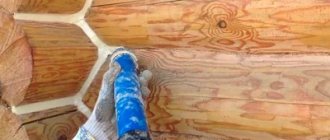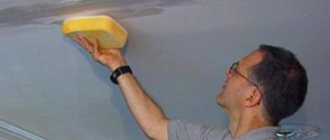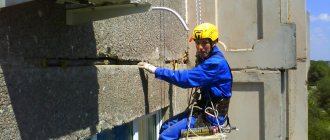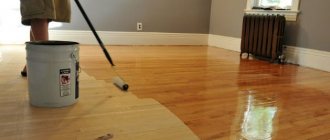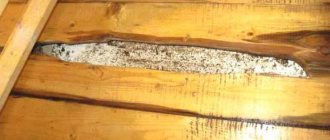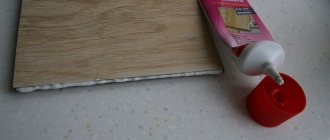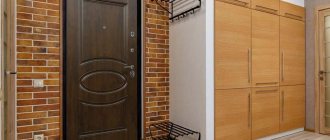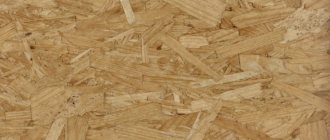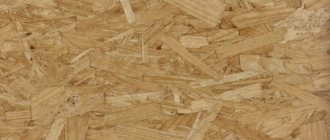What it is?
As the name implies, the main purpose of the entire group of similar building materials is to create an airtight coating. Sealants can be completely simple, without any additional properties, or special, for example, resistant to temperature influences, containing bacterial protection against fungus, etc.
According to the method of preparation, sealing compounds are divided into:
- One-component (hardens in air when applied to the surface);
- Two-component (they are two separate compositions in different packages, which begin to harden only some time after mixing).
The main active ingredient in sealants is acrylic, silicone, thiokol or urethane. For interior work and for wooden floors in particular, the first two types are usually used.
Requirements for the sealing compound:
- Good adhesion (adhesion) of the sealant to the surfaces to which it is applied;
- Elasticity, because even after applying the sealant, the slight mobility of the wooden elements relative to each other does not disappear;
- No harmful emissions during operation;
- The possibility of applying a final paint coating over it or the presence of persistent color pigments in the sealant itself;
- Water resistance. Of course, the wooden floor, and with it the sealant, will not be exposed to prolonged and abundant exposure to water, but the sealing compound must tolerate changes in humidity, cleaning with a wet rag or accidentally spilled water, otherwise it will be of little use.
Sealing according to the warm seam type
Insulation using a “warm seam” sealant for wooden houses is applicable in many cases. First of all, the technology is suitable for inter-crown spaces in houses made of timber. First, the gap is filled with a special cord, because placing such a quantity of sealing mass is expensive and impractical.
At the next stage, the sealant is distributed over the entire joint surface. This must be done with a pistol into which the product is drawn from a bucket. If the composition is purchased in a tube, then it is simply inserted into the gun. A corner is cut off at the tip at an angle of 45° so that the open part is equal in size to the size of the seam.
Sometimes performers put tape around the joint so as not to stain the adjacent parts of the surface. Experienced performers apply the mass from a gun in one step without misses, without using tape.
If the product gets on adjacent areas, they should be immediately wiped off with damp rags of any fabric. A large amount of excess can be obtained from novice installers; in this case, all flaws are removed with a spatula.
Of decisive importance is the thoroughness of the final alignment of the seam, which is carried out with a spatula, brush, sponge, or rag. This should be done soon after applying the product, after no more than two hours. If the finishing is done correctly and on time, the seam acquires a decent appearance.
Complete formation of the seam ends a few days after the polymerization of the mixture is complete. The speed of the final process is determined by the weather in general, air humidity and raw materials in particular. Only after the joint compound has completely hardened does the final color appear on the surface, which will remain for a long time during the operation of the building until scheduled repairs.
Using wood floor sealant
There are many ways to seal unwanted cracks at the joints of individual floor elements. What is a good sealant for a wooden floor?
- Will allow you to get rid of drafts and heat loss through cracks in the surface;
- It will completely remove or reduce squeaking caused by friction between individual boards;
- Prevents moisture from penetrating between the boards;
- Protects against insects that like to settle in the space between the boards;
- Eliminates places where dust and dirt collect.
Sealing compounds can be used on any type of wooden floor, be it just planks, parquet or laminate.
Price
The price for this type of finishing, such as joint sealant, used in wooden houses, can vary widely.
offers 15 kg of sealant for 3,300 rubles. Neomid sealant can be purchased at a cost of 3 kg - 1400 rubles, 7 kg - 2600 rubles, 15 kg - 4700 rubles. Many buyers speak extremely positively about this company. It has proven itself well in the market, the quality of the products meets all the stated requirements.
Wood sealant EurAcryl with a volume of 0.6 l/kg costs 310 rubles, the same volume, but a different brand - wood sealant Ramsauer Acryl 160. Its cost is 400 rubles. There is also a Ramsauer 320 Baudicht. Its price is 954 rubles. The cost depends on the manufacturer and seller.
You should avoid obviously cheap materials, as you may encounter a fake. To avoid this situation, it is better to make a purchase in a large shopping center or a trusted store.
Not a single wooden structure is immune from the appearance of cracks, cracks and gaps, no matter how high quality it is. Any wood is subject to shrinkage, to a greater or lesser extent, and it is impossible to completely eliminate this natural process, even with the help of modern technologies. But eliminating defects that have arisen is not at all difficult if you choose the right sealant for wood.
Wood sealant
Sealing and insulation
How to use
Before sealing cracks in the wooden floor of a house with sealant, these cracks must be cleaned of dust and dirt and, if necessary, dried. It is also desirable that for some time before applying sealants and throughout their hardening, approximately the same temperature and humidity conditions are maintained.
When the surface is properly prepared, the sealant is squeezed into the space between the boards in the wooden floor, spreading evenly with a spatula, spatula, or even just with gloved fingers, and the excess compound is removed with a dry cloth. To make this easy to do even before the composition begins to harden, it is better to apply it in small portions.
The sealant does not require special compaction to uniformly fill the seams. The fact is that in most cases such products are produced in syringe-type packaging or squeezed out through pistols, i.e. enter the gaps between the floor boards under pressure and thereby fill them tightly.
The sealant begins to dry within 10-15 minutes after application, but completely hardens on average within a day. The higher the humidity and lower the temperature in the room, the longer this will take. Information about how long each specific composition dries is indicated on its packaging.
An important point: most sealants have an unpleasant odor to one degree or another when applied. There is no need to be afraid of this; once such compounds freeze, they stop smelling, but it is better to carry out the work in a ventilated area.
Conclusion
As you can see, the variety of products for working with the wooden flooring of an apartment or house allows you to select not only by price category, but also to find exactly what is required for certain conditions. As we have already said, the workflow of applying sealant to a surface does not require special skills or abilities; it is only necessary to comply with safety measures: the use of gloves and a protective mask.
In the video presented in this article you will find additional information on this topic.
Which sealant to choose?
The variety of sealing compounds in building materials stores can confuse an untrained person. Everything is clear with the special properties of sealants: for example, for a damp room it is advisable to choose a product with antibacterial protection; and if the seam in a wooden floor will be visible, and its aesthetic appearance is necessary, then it is easier for it to be sealed at the cut with a colored compound. But what about the main active ingredients of sealants?
To work with wood, acrylic and silicone compounds are most often used, and polyurethane is slightly less common. They all meet the basic requirements for similar compositions, but still have some differences.
Acrylic sealants tend to shrink more (relative to those containing silicone), and after hardening they become less elastic. In this regard, such compositions do not tolerate significant temperature changes very well, and it is better not to use them in unheated rooms in cold climates. But such sealants can, if necessary, be sanded to obtain a flat and smooth surface, and are also easy to paint.
Silicone sealants are characterized by greater plasticity after application, are resistant to compression, bending and other deforming loads, adhere well even to fairly smooth and even surfaces, but are not suitable for subsequent painting. However, no one bothers you to buy an initially colored composition that matches the color of the floor covering.
Polyurethane compounds are the most durable and durable, they are resistant to serious fluctuations in temperature and humidity conditions (i.e. they can be used outdoors), are very elastic and resistant to damage. The only drawback can be considered only the higher price relative to acrylic and silicone compounds.
If we talk about specific manufacturers of sealing compounds, the following are well known and have proven themselves well:
- Ceresit (silicone and acrylic sealants);
- Moment (acrylic, silicone, polyurethane compounds);
- Tytan (silicone and acrylic sealants);
- Bostik (polyurethane, acrylic compounds);
- Neomid;
- Wepost Wood.
Famous manufacturers
There are certain fasteners that you can safely purchase. The companies that produce them have long received a good reputation from the best specialists.
Soudal
This product is made on an acrylic base, it has good strength, elasticity, and is excellent for installing wooden floors; in addition, it is used for fixing baseboards and trims.
The composition dries quickly, is produced in different colors (beech, oak, ash, and so on), and is not afraid of acids, alkalis and various chemicals.
After hardening, the joint can be varnished or sanded.
Crassus
The fixative for parquet is also made on an acrylic basis, odorless, and also environmentally friendly.
This is a high-strength grout for wooden floors that perfectly covers cavities and defects.
The advantages of this composition:
- Afterwards you can sand it, coat it with paint and varnish.
- They are not afraid of different temperatures and moisture.
- Good grip on different types of wood.
The sealant tolerates changes in wood up to 7%, this is important to know.
Titanium
Products from this manufacturer can be purchased in different colors (wenge, oak, cherry, and so on). Such a large selection makes it possible to choose the exact tone to match the color of the parquet.
Based on silicone, the substance perfectly tolerates various deformations, strong mechanical influences, it is very elastic and is not afraid of different temperatures.
Can be used when installing heated floors because it contains no formaldehyde.
Titanium fasteners are not afraid of water, have a long service life and do not crack.
User opinions
| Sealant | Review |
| Auster Parquet | Overall I'm pleased with the result. For a reasonable price, the result is a high-quality product that dries well, is flexible, economical in consumption, and easy to paint. The downside is that the color does not exactly match what is indicated on the package, and with large gaps additional sealing is required (for example, with a cord), otherwise the sealant will fail. |
| Neomid Wood Professional | This composition would be much better suited for walls. And the floor quickly cracks, despite the fact that the room is not so accessible. Otherwise, it’s a good sealant, it applies smoothly, and paints very well. |
| Wepost Wood | The only downside is the decent price. Otherwise, only positive impressions. The room has become much warmer, the floor does not creak, the seams do not crack, although they have been treated with sealant for quite some time. And what is important, any annoying small insects have practically stopped appearing. |
Let's sum it up
Sealing cracks and joints in a wooden floor with a sealant will reliably protect the room not only from drafts and heat loss, but also from dust, dampness and unwanted guests in the form of insects, and will also most likely stop the annoying creaking of the boards. It is easy to cope with sealing work; no skills in construction and repair are required, and manufacturers usually provide instructions for using the products on the packaging.
The difference between the compositions of sealants was discussed in detail, but in short - for normal room conditions, acrylic or silicone compounds are sufficient; for increased requirements for elasticity, strength and resistance to temperature fluctuations, it is recommended to invest in polyurethane sealants.
Peculiarities of processing seams of cuts and corners
The most difficult part of the work when carrying out manual sealing in accordance with all technological rules is the work in those places where wooden walls are connected.
- For such processing, you will need to lay a cord, measured along the entire length, into the joints.
- The cord is laid tightly into corners and cuts, using a narrow spatula, with which the prepared material is pushed into the very middle.
- Only after this the “warm joint” is applied as a sealing agent and completely leveled.
Experts quite rightly consider such work to be painstaking. In addition, it takes quite a lot of time, but the result is worth it. After all, it is the quality of sealing of all corner parts that, in the end, is the key to tightness for the entire wooden structure.
Taking into account the fact that usually a wooden surface is always treated with impregnation, as well as oily components, it does not adhere well to the composition. Therefore, experienced craftsmen first clean off the top layer using sandpaper, a hand grater or a grinder.

